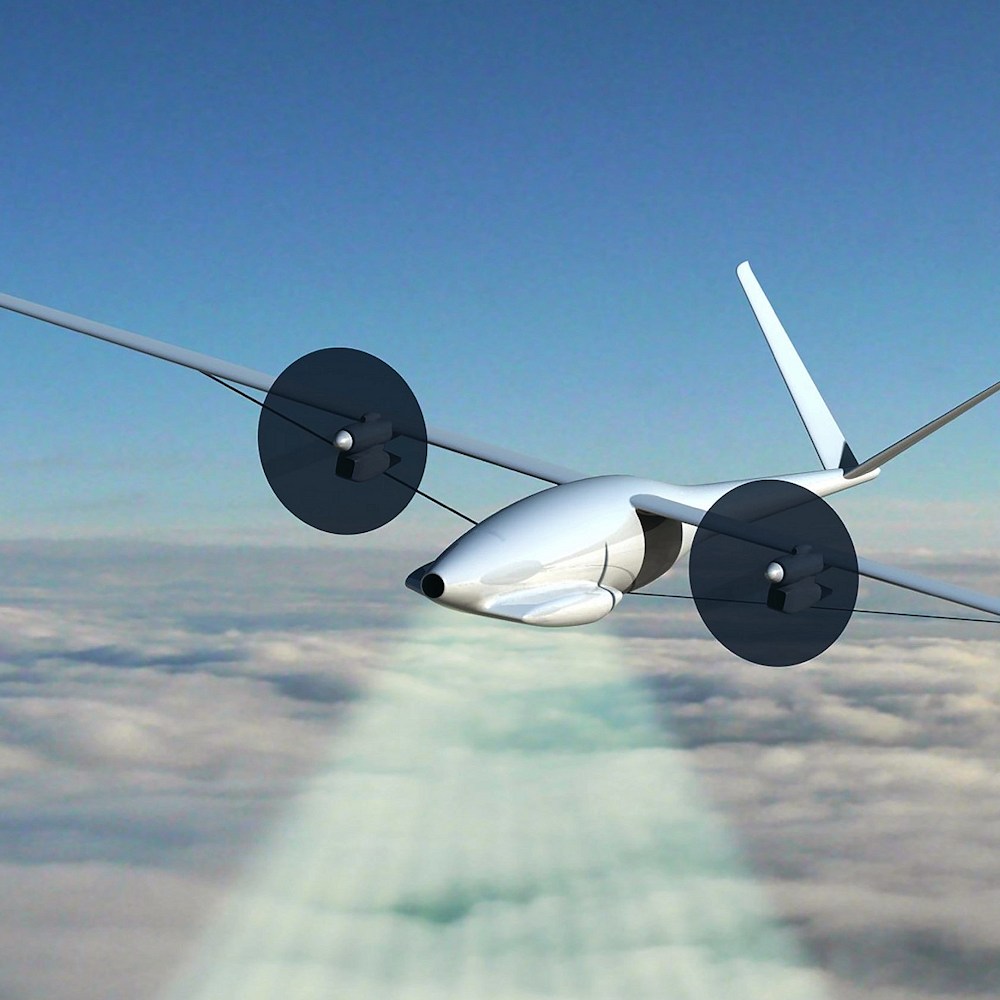
A new trial has been launched by telecoms giant BT (EE) and Stratospheric Platforms (SPL) – funded by Innovate UK, which aims to harness High-Altitude Platform Station (HAPS) aircraft, usually located above commercial air traffic in the Earth’s stratosphere, in order to extend 5G (mobile broadband) coverage into remote rural areas.
The idea of using unmanned aerial vehicles (UAVs) to deliver a mobile signal is nothing new, although in the past EE has tended to only adopt a limited use of drones and air balloons (blimps) for providing temporary connectivity (here) solutions to remote communities (eg during disasters, network outages or to help emergency services).
The new trial aims to go further by mounting an “innovative new antenna technology” on a hydrogen-powered HAPS aircraft, which is something that SPL has been developing for a while (here). BT sees this as potentially being a solution for rural 5G mobile coverage, although it could also be used in the same way as mentioned earlier (eg a fallback during disasters) and for remote monitoring across various industrial and agricultural use cases.
According to SPL, the new antenna can provide uninterrupted 4G and 5G connectivity directly to consumer smartphones. The phased array antenna is capable of delivering faster speeds, in some casesup to 150Mbps” across areas as wide as 140km or 15,000 square km (an area equivalent to the average footprint of 450 terrestrial masts), through 500 individually steerable beams.
However, there’s a lot of work left to do before all of this can be deployed in the field. The first step in BT and SPL’s journey to the skies, is the development of a secure 5G HAPS communications demonstration system. SPL’s phased array antenna will be placed on a high building (simulating a high-altitude platform), to test its interaction with BT’s 5G secure architecture, connecting with its OpenRAN testbed. This test will include supporting multiple user groups and different potential use cases, concurrently on the same network.
Tim Whitley, BT’s Managing Director of Research and Network Strategy, said:
“We’re delighted to be partnering with SPL to start realizing the huge potential of HAPS aircraft to further strengthen our UK 4G and 5G network technology leadership. This highly innovative and transformative project has the potential to further enhance our UK 4G and 5G footprint, which is already the largest and most reliable in the UK, to connect unserved rural areas and enable exciting new use cases for private users.”
Richard Deakin, CEO of SPL, said:
“The SPL team is excited to be working with BT Group to further advance its breakthrough UK-developed technology. This partnership will build further on SPL’s world-first 5G demonstration from the stratosphere achieved in 2022. With BT, we’re pleased to continue our journey supporting the UK to become a science super-power.”
At present, EE’s new 5G mobile network can already reach 60% of the UK’s population, but that largely reflects their urban deployments and we don’t know what their figure is for geographic coverage (it’ll be much lower). But we do know that they aim to reach 90% geographic coverage of such networks by 2028, while the remaining 10% is to be tackled by “on-demand” coverage solutions.
We suspect that the SPL technology could well form one of those on-demand solutions, although much will depend upon the commercial viability of this approach, and that’s why trials like this one exist. At the moment all of this is taking place at BT’s Adastral Park facility, but a good sign will be whether, further down the road, this gets extended into a live customer field trial.
The other issue is with performance and whether that figure of “up to 150Mbps” reflects shared capacity or capacity to each individual user. In the case of shared capacity, 150Mbps wouldn’t go very far, but we don’t yet know how many HAPS would be involved and there are a lot of other unknowns.